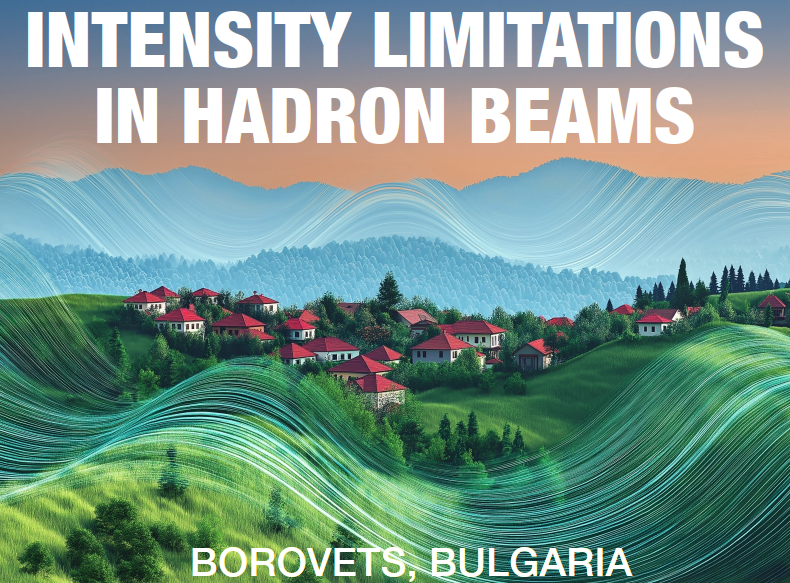Intensity Limitations in Hadron Beams, 15 - 27 June 2025, Borovets, Bulgaria
 Pushing the Limits: Intensity Limitations in Hadron Beams
Pushing the Limits: Intensity Limitations in Hadron Beams
In collaboration with the Faculty of Physics, Sofia University, the CERN Accelerator School is organising a topical course on Intensity Limitations in Hadron Beams.
An unprecedented intensity demand for hadron beams has become the norm today for a variety of particle accelerators from different fields.
This CERN Accelerator School course explores the challenges of generating and maintaining high-intensity hadron beams, crucial for a variety of applications in fundamental research.
Achieving peak performance in these machines requires a deep understanding of the factors that can limit beam intensity. During a two weeks course, we will delve into the limitations which these beams encounter in both linear accelerators (linacs) and circular accelerators.
This course provides a comprehensive overview of these limitations, including:
- Beam interactions with the surroundings: We'll examine how the beam interacts with its environment, starting from vacuum chambers and other accelerator components up to beam intercepting devices.
- Wakefields and impedances: Learn about the electromagnetic fields generated by the beam itself and derive their impact on beam stability.
- High-intensity instabilities: Explore the various instabilities that can arise in high-intensity beams, and understand how to mitigate them.
- Space charge effects: Understand the impact of the beam's own electric charge on its dynamics.
- Collective effects: Discover how the combined behaviour of particles in the beam can lead to complex phenomena.
The course also examines specific intensity limitations encountered in diverse applications, such as:
- Neutron sources
- Radioactive ion beams
- Neutrino factories and muon colliders
- Hadron colliders
- Accelerator Driven Systems for energy production
Through a combination of lectures and case studies, you'll gain the knowledge and learn about the required tools to analyse, understand, and overcome intensity limitations in hadron beams.
Who can apply?
The course is aimed at
- postgraduate students in the accelerator domain (ie. minimum of Bachelor’s degree or equivalent)
- employees in accelerator laboratories, university departments and companies manufacturing accelerator equipment
- engineers and scientists with a few years’ experience in accelerator physics, engineering, or related fields.
We welcome applications from all countries and nationalities. Applicants are responsible for ensuring that their registration fee and travel cost is covered by their home institute or employer, or, failing this, themselves.
Early applicants will be given priority in the selection process. With a limited number of participants, we strongly advise you to apply early to secure your place. Waiting until the deadline may reduce your chances of being selected. Keep in mind that there is a limited number of single rooms available. Once the course is complete, we will close the registration.
As usual, we will accept GRANT applications for participants from countries developing the accelerator field, which will otherwise have no possibility of taking part. Applications need to fulfil the same requirements as mentioned above. Further details can be found under ‘Apply for a Student Grant’.
Important dates
- Friday 8 November 2024 - registration opens
- Tuesday 1 April 2025 - Grant Registration deadline
- Wednesday 30 April 2025 – final deadline for applications (unless course is fully booked)
- Friday 2 May 2025- registration fee payment deadline
- Sunday 15 June 2025 (afternoon/evening) - participants arrivals
- Friday 27 June 2025 (morning) - departure